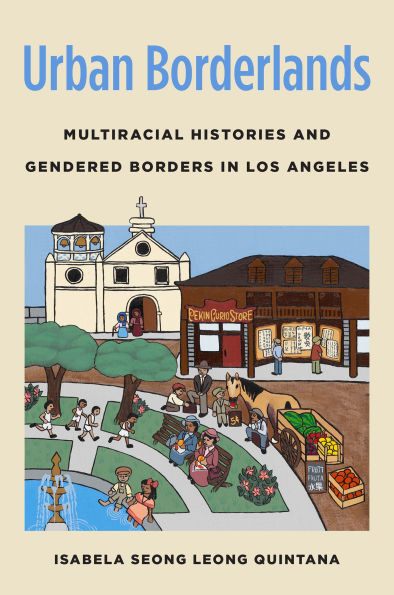Los Angeles in the late nineteenth century was bustling with the rise of industrialization, but the growing labor force that propelled it, mostly consisting of Mexican and Chinese men, was met with exclusion policies and deportation campaigns. Nevertheless, Chinese and Mexican women, children, and men built vibrant residential and business districts—until they were all but eradicated in the 1930s. In this compelling and textured history, Isabela Quintana unearths the entwined stories of Chinatown and Sonoratown through the everyday lives of their residents. As Quintana argues, their ordinary experiences illuminate the interlocking and gendered processes of racial segregation and border formation that built the Los Angeles we know today.
The blurry borders, geographic, cultural, and otherwise, between these communities—what Quintana calls urban borderlands—were less defined than official records would have us believe. Centering the lives of women and children, and the archival glimpses and silences that account for them, Quintana uncovers moments of familiarity, kinship, conflict, and collaboration born of proximity and shared space, particularly that of the Los Angeles Plaza. Revealing experiences of border policing, racial violence, and perceived foreignness, Quintana’s dynamic narrative offers an innovative approach to understanding the layered histories of urban renewal in Mexican and Chinese Los Angeles.
1146314202
The blurry borders, geographic, cultural, and otherwise, between these communities—what Quintana calls urban borderlands—were less defined than official records would have us believe. Centering the lives of women and children, and the archival glimpses and silences that account for them, Quintana uncovers moments of familiarity, kinship, conflict, and collaboration born of proximity and shared space, particularly that of the Los Angeles Plaza. Revealing experiences of border policing, racial violence, and perceived foreignness, Quintana’s dynamic narrative offers an innovative approach to understanding the layered histories of urban renewal in Mexican and Chinese Los Angeles.
Urban Borderlands: Multiracial Histories and Gendered Borders in Los Angeles
Los Angeles in the late nineteenth century was bustling with the rise of industrialization, but the growing labor force that propelled it, mostly consisting of Mexican and Chinese men, was met with exclusion policies and deportation campaigns. Nevertheless, Chinese and Mexican women, children, and men built vibrant residential and business districts—until they were all but eradicated in the 1930s. In this compelling and textured history, Isabela Quintana unearths the entwined stories of Chinatown and Sonoratown through the everyday lives of their residents. As Quintana argues, their ordinary experiences illuminate the interlocking and gendered processes of racial segregation and border formation that built the Los Angeles we know today.
The blurry borders, geographic, cultural, and otherwise, between these communities—what Quintana calls urban borderlands—were less defined than official records would have us believe. Centering the lives of women and children, and the archival glimpses and silences that account for them, Quintana uncovers moments of familiarity, kinship, conflict, and collaboration born of proximity and shared space, particularly that of the Los Angeles Plaza. Revealing experiences of border policing, racial violence, and perceived foreignness, Quintana’s dynamic narrative offers an innovative approach to understanding the layered histories of urban renewal in Mexican and Chinese Los Angeles.
The blurry borders, geographic, cultural, and otherwise, between these communities—what Quintana calls urban borderlands—were less defined than official records would have us believe. Centering the lives of women and children, and the archival glimpses and silences that account for them, Quintana uncovers moments of familiarity, kinship, conflict, and collaboration born of proximity and shared space, particularly that of the Los Angeles Plaza. Revealing experiences of border policing, racial violence, and perceived foreignness, Quintana’s dynamic narrative offers an innovative approach to understanding the layered histories of urban renewal in Mexican and Chinese Los Angeles.
22.99
Pre Order
5
1

Urban Borderlands: Multiracial Histories and Gendered Borders in Los Angeles
224
Urban Borderlands: Multiracial Histories and Gendered Borders in Los Angeles
224Related collections and offers
22.99
Pre Order

Product Details
| ISBN-13: | 9781469675817 |
|---|---|
| Publisher: | The University of North Carolina Press |
| Publication date: | 01/01/2026 |
| Series: | Gender and American Culture |
| Sold by: | Barnes & Noble |
| Format: | eBook |
| Pages: | 224 |
About the Author
What People are Saying About This
From the B&N Reads Blog
